Which Smart Heating Thermostat is Right for You?
Smart thermostats are devices that allow you to remotely control your home's temperature through your smartphone. They allow for greater control over your central heating and can even reduce your annual energy bills, but how do you know which one is right for you?
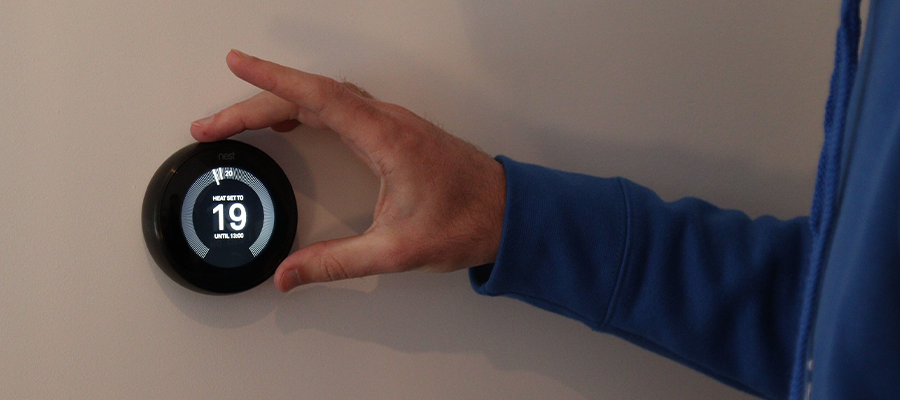
How do smart thermostats work?
Smart thermostats work by using a sensor that measures the temperature of your house or specific room in order to adjust the heating or cooling. They can usually be controlled using smartphone apps and voice commands.
Once the thermostat has sensed a specific temperature, or you have given a command through the app, the thermostat will then send a signal to your boiler or heat pump to activate the heating. Your heating system will then turn off automatically when the desired temperature is reached.
Smart thermostats will usually also feature ‘learning’ modes, which allow them to detect recurring heating patterns and set your home's heating to the desired temperature.
Different types of smart thermostat
Google Nest
The Google Nest is one of the most popular brands of Smart Thermostat thanks to its smart technology that allows it to adapt your home's temperature based on your behaviour.
By monitoring user habits, the Nest is also able to create personalised heating schedules and eventually the learning capabilities will know so much about you that you’ll never have to change the temperature by hand. It also features a motion sensor that will detect when your home is empty and doesn’t need to be heated. The Nest can be controlled through smartphone, tablet and desktops.
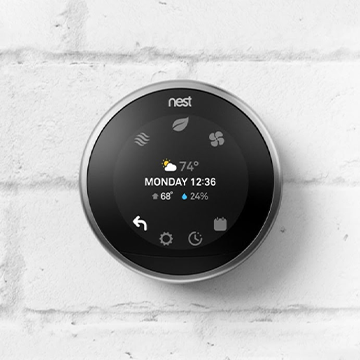
Photo Credit: Google Nest
The Google Nest Learning Thermostat does require professional installation, whereas the Google Nest Thermostat E can be installed yourself.
Check out our guide on Nest thermostats and combi boilers to find out more information on their compatibility and how to install them.
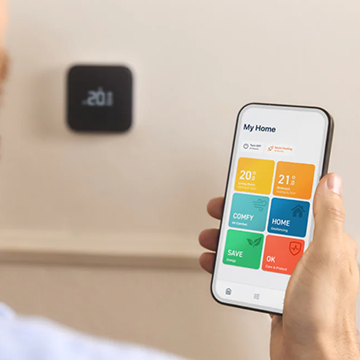
Photot Credit: Tado
Tado
The Tado smart thermostat is very similar to the Google Nest in the sense that it seeks to adapt to the users’ lifestyles. The device learns from user behaviour and tries to match your home's temperature to your heating preferences in the most energy efficient way possible.
This smart thermostat learns by tracking user habits on the smartphone app. For example, when everyone leaves the house it turns the heating off, and when someone returns it begins to turn the heating up.
The Tado device also takes into account weather conditions, which can help users save up to 31% on their energy bills according to the Tado manufacturers.
British Gas Hive
Unlike the Google Nest, the British Gas Hive operates by the user being fully involved in the heating of your home. The Hive is built around a dashboard which allows users to manage their home’s temperature using their smart device.
Hive allows users to design their heating schedules and change their home’s temperature whenever they wish. The device can also automatically turn on if your pipes are going to freeze due to cold weather.
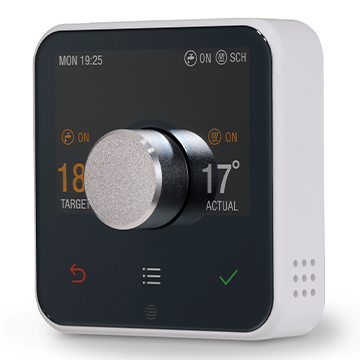
Photo Credit: Hive Home
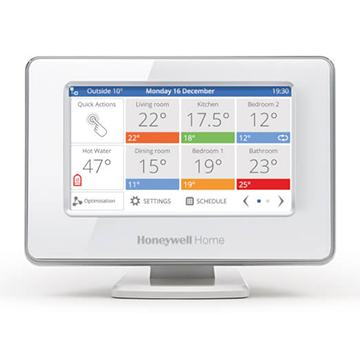
Photo Credit: Resideo
Honeywell Evohome
The Honeywell Evohome has the ability to split up your home into 12 individual heating zones. The Honeywell technology incorporates much of the other smart thermostat features, including hot water control through smartphone apps.
Honeywell Evohome is available to purchase online from different retailers.
Drayton Wiser
The Drayton Wiser is a smart home heating system that is made up of a smart home hub and smart room thermostat. It also has other add-ons such as the multi-room kit that offers room-by-room control and smart radiator thermostats that offer control of each individual radiator.
Prices of the Drayton Wiser will vary depending on which products you purchase and the layout and size of your home.
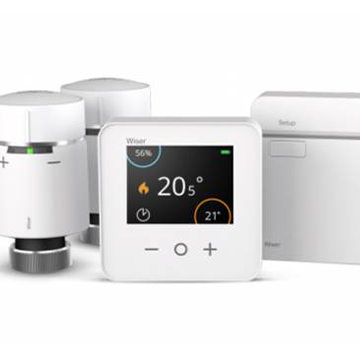
Photo Credit: Drayton Controls
How do I know which smart thermostat is right for me?
In order to know which smart thermostat is right for you, you will need to check the compatibility with your existing heating system.
You should consider a few different factors, such as:
Pros and cons of smart thermostats for home heating
Before you commit to investing in a smart thermostat, it’s worth taking a look at the pros and cons.
Pros of a smart thermostats:
Cons of smart thermostats:
Do you need an electrician to install a smart thermostat?
If you feel confident enough to install a smart thermostat yourself, then you won’t need the help of an electrician. As long as you have basic electrical skills and you follow the manufacturers guide correctly, then you should be able to install them yourself.
However, if you don’t feel confident with DIY electrical work or you have a more complicated boiler set up, then we always advise you to get the help of a qualified electrician.
At Lacey Plumbing & Heating, we can help to set-up your smart thermostat with minimal downtime. Our high-quality services are always conducted by a Gas Safe engineer who will ensure the installation is completed to a high standard, allowing you to heat your home without any worries.
Will a smart thermostat save you money?
Yes, smart thermostats can help to save you money on your energy bills since they can very quickly learn your habits and automatically adjust the temperature to the most optimal settings.
Many models even provide energy usage reports and tips on how to save money.



